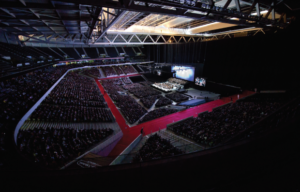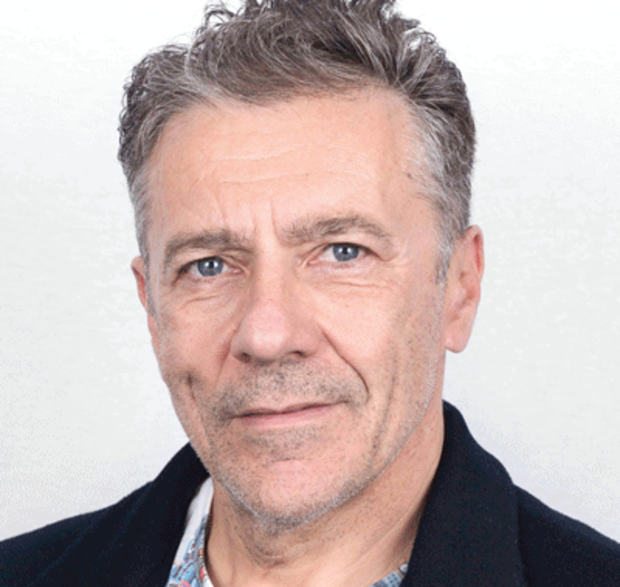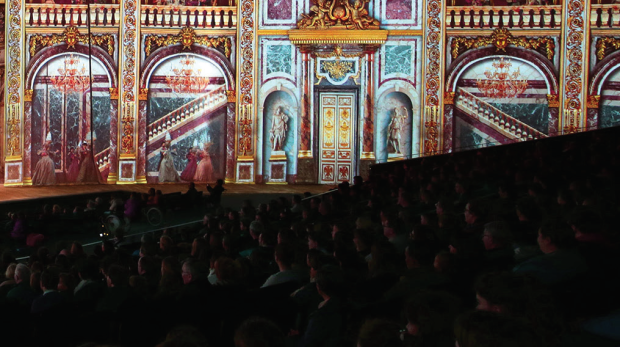
The L-ISA revolution: a look at L-Acoustics trailblazing immersive audio system
L-Acoustics’ ambition continues apace with L-ISA, a new immersive processing, recording, mixing, label and playback system, aimed at live music and special events, as well as high end private markets. Simon Duff reports…
Since 1984 Dr. Christian Heil and his company L-Acoustics have been at the forefront of live sound with their pioneering Line Source Systems. From the MTD Coaxial Series and V-DOSC to K1, Kara, K2 line source arrays, up to 2017’s Syva colinear source and the upcoming P1 networked digital audio processor, its touring and installation solutions have gained the company an enviable position. Heil’s desire to innovate and progress has been relentless.
In 2014 that drive and ambition took a new turn when he announced a new venture called L-ISA, a radical immersive sound format designed to target not only live sound but also studio recording, re-mixing, re-mastering and private installations. Relocating from Paris to London to realise the project, Heil has set up the L-ISA headquarters in a former Post Office sorting depot in north London. Alongside him is a team headed up by Sherif El Barbari, director of L-ISA Labs and Guillaume Le Nost, director of R&D, L-ISA.
Make no mistake, the scale, courage and ambition of L-ISA is enormous and far-reaching. L-ISA stands for Immersive Sound Art and the new company forms part of the L-Group that includes L-Acoustics, as well as the Camco and Simea brands. L-ISA is an immersive audio technology, combining L-Acoustics’ sound design and loudspeaker systems with sophisticated processing tools to create what Heil terms is a “hyperrealistic experience for audiences at live shows, creative events and private residences. L-ISA aims to provide high performance, practical solutions for artists, composers and live entertainment professionals who wish to integrate ultimate localisation accuracy and immersive sound experiences into their live performances.”
L-ISA Live
At the heart of the L-ISA system is the L-ISA Live application for large scale events and touring. Based on a frontal PA system, it offers object-based mix processing, utilising a minimum of five L-Acoustics line source arrays across what it identifies as the Performance Zone. The process can go up to, and handle as many as 32 arrays. Supplementing the Performance Zone is the Immersive system, which surrounds and envelopes the audience with additional sound sources and effects (a Extension Zone can also be used). At the heart of the installation, a L-ISA Processor provides object-oriented mixing of up to 96 audio sources routed into 32 speaker outputs. The L-ISA Controller software offers five control parameters: Pan, Width, Distance, Elevation and an Aux Send. In a live application audio signal path the L-ISA Processor is utilised between the output of the FOH console and the loudspeaker amps, supporting MADI, up to 96kHz.

The overall aim of L-ISA Live is to bring audio back into the heart of an event. Critically, it is a move away from the traditional L/R line array hang tradition, in essence bringing back sound to a centre focus with immersion. Guillaume Le Nost comments: “What you see is what you hear is one of our slogans. We believe that L-ISA technologies will satisfy the growing demands of artists and show designers wishing to deliver the ultimate multi-dimensional experience. Due to the high spatial resolution of our multichannel speaker installations, a L-ISA sound system provides the audience with spectacular dynamics, low distortion, and a thrilling and unforgettably natural feel. It really is time that audio caught up with developments in video and lighting and that a new audio focus be found and accepted.”
Recent L-ISA shows
The proof is already evident that L-ISA is making a serious impact on the touring sector. Across a range of diverse acts the system is being deployed on large shows. L-ISA Live has been used in a recent 50+ date tour in France by the French singer songwriter Renaud, and American electronic duo Odesza used it on a recent large scale EDM production in California. However, Le Nost believes that classical music is an area where L-ISA will be in high demand.
In July this year one of the most high profile and largest deployments of L-ISA to date was for a performance of Verdi’s Requiem given by the Orchestre National de Lille and the Choeur Régional Hauts-de-France. The concert took place at Lille’s Stade Pierre-Mauroy, a 30,000-capacity stadium and home for the Lille football team. In order to realise the event, Sherif El Barbari studied the acoustics of the Stade Pierre-Mauroy stadium, modelling it in L-Acoustics’ Soundvision software before proposing a L-ISA system comprising seven hangs of nine Kara stretched across the stage, to deliver hyper-localised sound. A mirror system of seven ground stacks of two Kiva II each across the stage lip provided front fill. Two hangs of eight K2 served as outfill and two central hangs of four KS28 subwoofers provided low end. The entire system was driven by LA8 and LA12X amplified controllers. A L-ISA controller provided an advanced object-based multichannel environment for the event.
François Gabert, FOH engineer of the Orchestre National de Lille, commented after the concert. “We found the L-ISA controller very simple to use. The interface is intuitive and very functional. Once the sources are placed in their space, the mixing is fairly conventional and any adjustments within the software during the concert were quick and easy.”
Central to the system’s design was the desire to deliver the what you see is what you hear ethic, to each of the 13,000 spectators at the concert, effectively putting the audience into the sweet spot occupied traditionally by the conductor, Jean-Claude Casadesus. It was, however, the clarity and natural feel of the sound which most impressed Gabert. He adds: “The greatest compliment that I could receive would be for someone to ask me after a concert if there was any sound reinforcement. Given the results we obtained at the Stade, I’m convinced that in a more traditional environment, the audience wouldn’t know that there was any sound reinforcement at all.” Gabert says that, having experienced L-ISA, going back to using any other system would be “heartbreaking”.
“It is an indispensable tool for classical music, opera and large ensembles. I look forward to working with L-ISA again and deepening this experience. L-ISA has a bright future ahead.”
Theme park
Another high profile use of L-ISA is its deployment in theme parks. Where the sound system is used for show playback purposes it is called L-ISA Creative. In July this year L-Acoustics and the theme park Puy du Fou, in Western France, one of Europe’s most successful theme parks, announced that they had signed a privileged partnership agreement. By joining the Puy du Fou Club of Partners, L-Acoustics, and the famous theme park, which has used L-Acoustics sound systems for more than a decade and now with the use of L-ISA, strengthened their collaboration. Puy du Fou is a unique concept created by Philippe de Villiers 40 years ago. Nestled in the countryside, the theme park offers visitors the chance to travel through time via incredible spectacles staged across the park. The first L-Acoustics system at the Puy du Fou was installed in 2000 for the Gallo-roman Stadium. Today, the manufacturer’s sound systems are in use throughout the park, most notably in Le Dernier Panache, which took the industry-recognised Thea Award this year and which features the first permanent installation of L-ISA.
The L-ISA lab
The L-ISA project was developed from the start with a clear vision. The company’s aim is to support musical creation and sound art with an exceptionally high resolution audio format, specifically developed to render the full dynamic range and every nuance of music. To make that vision come true, the L-ISA Lab in London was transformed to fill in the missing links between audio technology, sound artists, music creators and patrons of fine art, and thus to give life to unique pieces of 21st century music art. The 24-channel playback format and corresponding mixing algorithms have been developed to refine the musical reproduction and provide the highest quality spatial resolution. Le Nost adds: “Musical creations mixed in the L-ISA Lab provoke a sense of musical hyperrealism. The listener becomes the conductor of a symphony orchestra, the concert pianist in mid-recital, the close friend of a rock star watching from within the stage area, or profoundly immersed in a tropical rainforest. Every nuance, every instrument, every movement is reproduced with extreme precision in a multi-dimensional sound universe. The L-ISA Lab offers facilities for artist residencies, recording and music production. Technical training and support can be provided, depending on the complexity of the projects.”
L-ISA and Digico
The scale and ambition of L-ISA raises new challenges for many sectors in pro audio manufacturing. Already, leading brands are on board with Heil’s vision. In June of this year, Digico announced an L-LISA feature in that an L-ISA Source Control functionality would be integrated into Digico’s SD range of mixing consoles, adding L-ISA’s object-based mixing technology to the console’s control surface. For L-ISA Live and Creative applications, the seamless integration of L-ISA Source Control into the Digico SD-Series means that sound engineers will be able to use a familiar workflow on an industry-leading console to manage immersive environments easily and intuitively. With the L-ISA/Digico integration, up to 96 Input Channels can be designated ‘L-ISA channels’, each one allowing the engineer to control pan, width, distance and elevation, as well as a designated aux send, for any given L-ISA source object directly from the mixing console. All L-ISA parameters can be stored in the powerful Snapshots engine and recalled in the same way as other console parameters.

The L-ISA Source Control functionality expands the range of creative choices the mixing engineer can employ simultaneously, ranging from classic stereo or 5.1 controls, for uses such as down mixes or auxes, to the advanced object-based multichannel environment offered by L-ISA. El Barbari comments: “As well as offering a streamlined user experience, integrating the L-ISA Source Control into Digico’s SD consoles provides productions with a sophisticated yet intuitive solution to the growing demand for immersive sound designs. Working with the outstanding team at Digico has helped us move closer to our shared vision of bringing immersive, hyperreal sound to live, professional and private events.”
“Digico is always keen to innovate, and it was fun and interesting to see what the possibilities were,” affirms James Gordon, managing director at Digico. “It’s been a pleasure to work with L-Acoustics to integrate L-ISA with the SD-Range. We share a lot of customers around the world and adding this new level of integration and control into the new world possibilities of L-ISA further strengthens our commitment to them and to the immersive future of sound.” L-ISA Private The L-ISA Private system transforms the 23.1 objectbased record/mix/playback/system format into a high-end residential offer called L-ISA Private, using 23 L-Acoustics loudspeaker channels plus sub, set up in a geometric configuration. Loudspeaker numbers can go up to as many as 48 depending on room size. Essentially, L-ISA Private offers private users the chance to experience L-Acoustics’ sound live in the comfort of their own home. Content is currently being made available through the Blububbles music label and sound art gallery.
Private installations offer 18 main channels, a bass channel and up to five overhead channels. Three L-ISA Private systems are available, catering for different room sizes: Island, Ocean and Arena. At the heart of these systems is an L-ISA Player, a 24-channel playback device that stores and reproduces audio content. New sound immersion and content is at the heart of Heil’s thinking. The L-ISA Player, working off a format called Blu 23.1, has been specially designed to provide audiences with the best available sonic quality. It can be controlled via either a dedicated hardware remote, the Blububbles control tray, specifically for Blububbles content, or via the intuitive L-ISA Player control app on a tablet or smartphone. The control app also allows basic selection of more traditional sources, such as Blu-Ray players, or digital media players, which can be easily integrated into the installation irrespective of their physical location within a home. The control tray itself is quite literally a veritable jewel box. It controls essential functions while playing back an individuals’ choice of music, which is stored in ‘Bubbles’. When a Bubble is placed on the control tray, it automatically starts playing the corresponding content. The listener can then relax and adjust the level using the wireless volume control that can be removed from the tray to keep close to hand. The Blububbles control tray is connected to an installation via a single network connector.
Sound Art
The Blububbles music label and sound art gallery represents artists, bands and orchestras from different musical genres. The idea is that these artists will produce limited editions of, for example, their live performances, that are remixed for the Blububbles label. Other artists may choose to produce dedicated pieces as one unique artistic piece. Artist commissioning is an element of the Blububbles’ mission that consists of elevating the quality of listening to its highest level, as well as bringing the experience of musical art to the home. Artists working with the label so far include French classical music ensemble, Les Siècles as well as Yapa, a jazz group from Paris, and composers Jeremy Brown and Robert Thomas. Exciting times indeed for Heil and his team and indeed all those working in the immersive audio field. Many challenges remain but given Heil’s track record, ambition and determination he is well on his way with his new adventure in modern sound.
www.l-isa-immersive.com
www.l-acoustics.com
Source: mi-pro.co.uk









